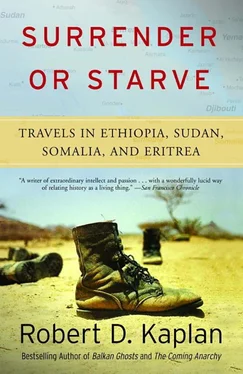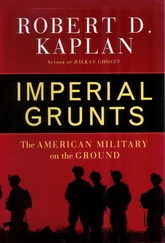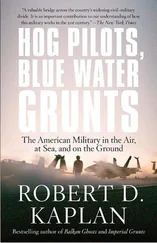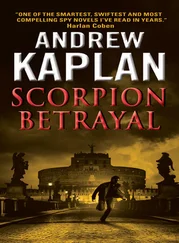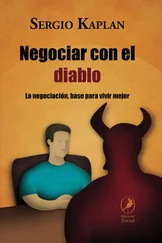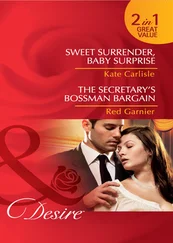The same guerrillas whom I profiled in this book now form the government of Eritrea. It is the same monastic sense of isolation from—and suspicion of—their neighbors, which I first observed nearly two decades ago, that makes the Eritreans value an expanding relationship with the Americans and the Israelis. Finally, and tangential to these other issues, is the whole question of realism versus idealism in foreign policy. The Cold War history of the Horn of Africa, especially in the late 1970s—as I explain in these pages—shows how idealism shorn of any element of realism is immoral. In the Horn, it was the Ford Administration’s policies that held out at least a small hope for minimizing human suffering. And it was the idealistic, yet naïve, approach of Jimmy Carter’s State Department that contributed to a situation in which hundreds of thousands of people would later be killed.
I thank my agent, Carl D. Brandt, as well as Martin Asher, LuAnn Walther, and Andrew Miller at Vintage Books, for their commitment to keeping all my books in print; and Michael Kelly, Cullen Murphy, and William Whitworth for the support I have received, and continue to receive, from The Atlantic Monthly.
Usually it is said that periodic droughts cause bad crops and therefore starvation. But it is the elites of starving countries that propagate this idea. It is a false idea. The unjust or mistaken allocation of funds or national property is the most frequent source of hunger.
—Ryszard Kapuscinski,
The Emperor
Sand has various qualities relevant to this discussion, but two of these are especially important. The first is the smallness and sameness of its parts. …The second is the endlessness of sand. It is boundless. …Where it appears in small heaps it is disregarded. It is only really striking when the number of grains is infinite, as on the sea-shore or in the desert.
Sand is continually shifting, and it is because of this that, as a crowd symbol, it stands midway between the fluid and the solid symbols. It forms waves like the sea and rises in clouds; dust is refined sand.
—Elias Canetti,
Crowds and Power
If the earth were really flat, northwestern Somalia would approximate the edge. A landscape more bleak and disorienting is hard to imagine. Not a tree looms in the distance; there are only anthills. Curtains of dust weld desert and sky into one dun-drab pigment. The clumps of short grass have a freeze-dried, glacial aspect, even though the equator is only six hundred miles to the south.
As the Land Cruiser in which I am riding moves closer to the Ethiopian border, swarms of canvas huts zoom into focus, without warning, through the swirling dirt. The vehicle halts. The lips and noses of refugees, who live in these huts, press against the windows. The expressions I see through the glass are opaque; there is a particle-like uniformity to the faces. They lack the angular, Semitic beauty and globular eyes that television viewers normally associate with the people of Ethiopia. The shreds of material on their backs are characterless synthetics; not the traditional shammas that make the Ethiopians of the famine-stricken north resemble extras in a biblical epic.
Nor were these people, whom I had come to interview, starving. They were not Auschwitz-like sacks of bones. Had they been, the skill of television cameramen could have at least endowed them with an individuality. They were only normally malnourished and suffered from the usual roll of African diseases. Not beautiful, and not starving, these people made no impression. They were just a large mass, significant only because of their numbers. Television could do nothing with them. By the sensational standards of evening news coverage in the United States, they offered no visual drama. The only thing these people had to offer were their stories.
Ethiopia, as a historical and romantic concept, is a loose and wondrous fragment of the Middle East, and this group of humanity on the Somali frontier represents the more mundane African reality that always has threatened Ethiopia’s romantic image. The late twentieth century in Ethiopia is little different than the late nineteenth. While Semitic Christian warlords in the northern highlands—today fighting as communists—battle for control of an ancient kingdom, the lowland underbelly of Ethiopia is teeming with Africanized Moslems, called Oromos. As opposed to the highland northerners, who, like the Jews and Arabs, are said to descend from Shem, the eldest of the sons of Noah, the Oromos, linguistically at least, trace their roots back to Ham, the youngest of Noah’s progeny. Although the Oromos are the most numerous of Ethiopia’s peoples, they have never really mattered, and at least until recently, they suffered less than those who did. Unlike the lives of the Amharas, Tigreans, and Eritreans of the north, the lives of the Oromos were not a continual cycle of war and drought. In fact, the Oromos of the Hararghe region, near to the border with Somalia, were relatively prosperous farmers. Joseph Stalin would have classified them as kulaks. On account of their numbers, and the food they produce, they have the capacity to support and to undermine the Ethiopian regime in the capital of Addis Ababa. To judge by his actions, Ethiopian leader Mengistu Haile Mariam, whose preeminent title is General Secretary of the Workers’ Party of Ethiopia, evidently agrees with Stalin.
Formerly, the Oromos could be exploited, but every aspect of their daily lives could not be controlled. But now that situation has changed dramatically. Supported by the Soviet Union and the rest of the Eastern bloc to a degree unprecedented in Africa, the present leaders in Addis Ababa—Christian Amharas all—have invigorated Ethiopia’s age-old despotism with modern, totalitarian techniques.
Through one of these techniques, the waves of Moslems crashing against the Christian mountain fortress has now been dammed up. The process is called “villagization,” an awkward translation from Amharic that means something strikingly similar to collectivization, as originated by the Soviets after the Bolshevik Revolution. As we will later discover, the famine holocaust in Ethiopia—although resembling what transpired in Biafra in the 1960s and Cambodia in the 1970s—actually is derivative of the Stalinist experiment in the Ukraine in the 1930s, when, according to Hoover Institution scholar Robert Conquest, more people perished than had in all of World War I.
During the mid 1980s, the declared intent of the Ethiopian government was to move all the Oromos into village clusters, where Oromo labor could be better organized and the authorities more easily could provide the Oromos with essential services. Eyewitness accounts of what really happened during villagization were provided by many of the fifty thousand Oromo refugees who stampeded over the Somali border in 1986, fleeing the program’s horrors. “In my life I never saw drought,” exclaimed Zahara Dawit Kore, a mother of two children. “It’s not from drought that we ran; we ran because of the soldiers. …They made us bare-handed,” she told me during an interview I conducted in late October 1986. What the soldiers did to these Oromos was apparently terrible enough to spark an exodus to northwestern Somalia.
All the eyewitness accounts were basically the same; all the Oromos apparently were brutalized in a similar way. Sexual violation and religious persecution were the tools used to destroy local village culture. But listen closely and long enough—several hours for each refugee—and one discovers that despite the shared experience, each man and woman suffered in a particular way. Each account had its own characteristics. Tens of thousands of Oromos, perhaps more, suffered, but each differently.
Читать дальше
